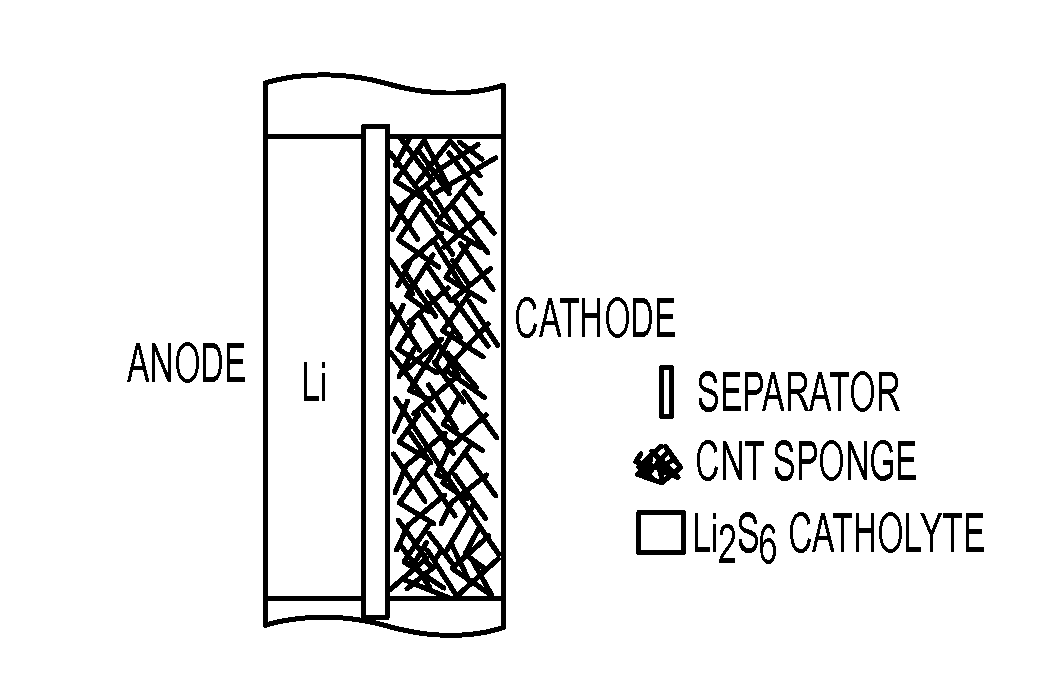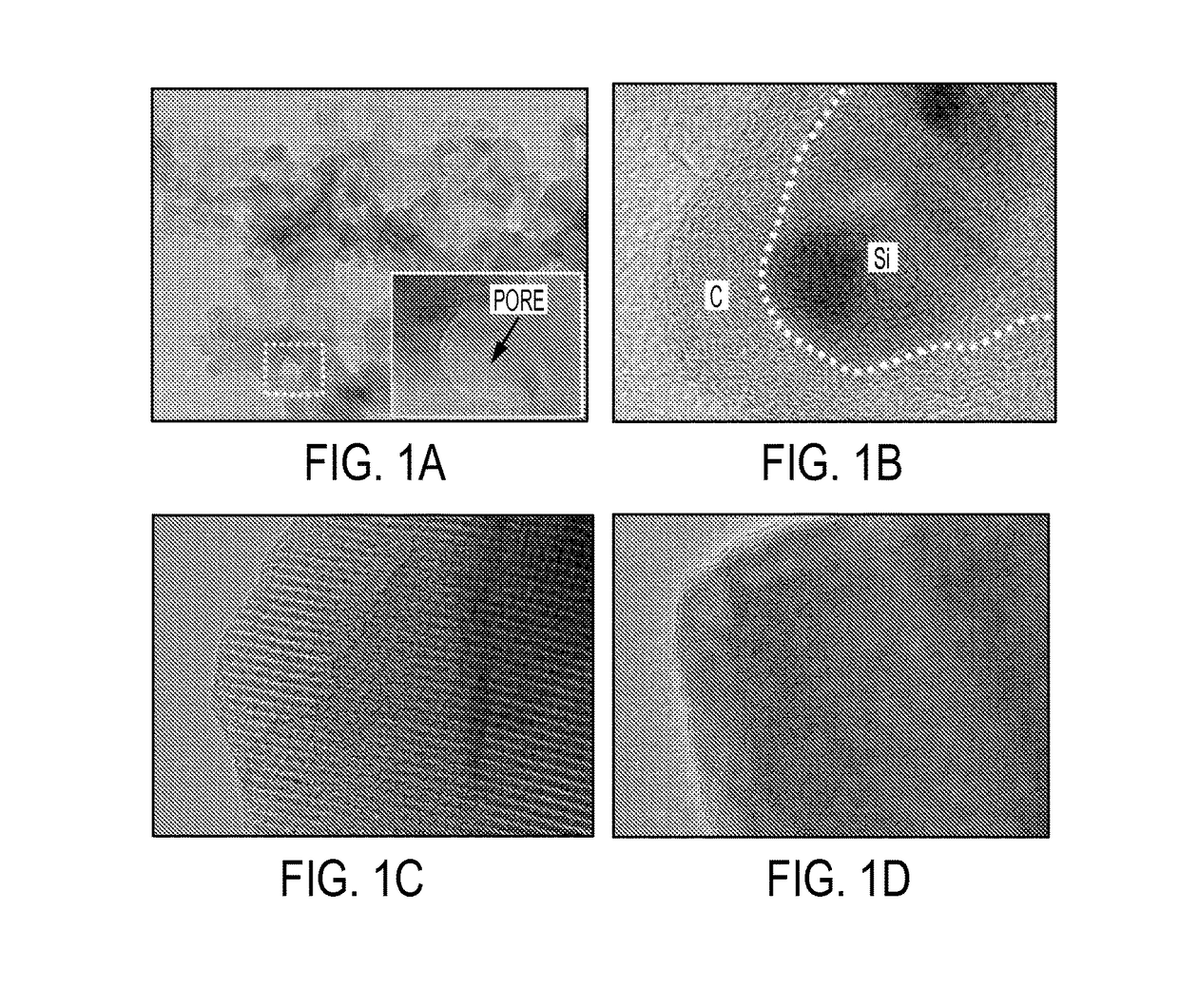Large energy density batteries
a large energy density, battery technology, applied in the direction of cell components, cell component details, electrochemical generators, etc., can solve the problems of unsafe li metal anodes in li—s batteries, unreliable, and high cos
- Summary
- Abstract
- Description
- Claims
- Application Information
AI Technical Summary
Benefits of technology
Problems solved by technology
Method used
Image
Examples
working examples
[0051]Synthesis of carbon-coated mesoporous Si (C-mSi). Mesoporous Si was synthesized by a magnesiothermic method. Mesoporous SiO2, SBA-15 was prepared, and then mixed and ground with Mg powder (molar ratio of Mg:Si=2:1) in a mortar. The mixture was then sealed in a ¼″ Swagelok coupling and transferred to a tube furnace in Ar (100 sccm). The temperature was ramped up to 650° C. at a rate of 5° C. / min, and kept constant for 2 h. The obtained powders were washed with 2-M HCl overnight and then 5-wt % HF for 10 min. After washing the powder with ample deionized water, the obtained bright-brown Si powders were vacuum-dried at 60° C. for 6 h. To obtain a carbon coating, the Si powders in a crucible were transferred into a tube furnace, and temperature was ramped up to 800° C. in 30 min in a flow of 100-sccm Ar, and then 20-sccm C2H2 was added to the Ar flow for 15 min. By measuring the weight of the powders before and after the carbon coating, carbon contents in the power was estimated t...
PUM
| Property | Measurement | Unit |
|---|---|---|
| distance | aaaaa | aaaaa |
| voltage | aaaaa | aaaaa |
| thick | aaaaa | aaaaa |
Abstract
Description
Claims
Application Information
 Login to View More
Login to View More - R&D
- Intellectual Property
- Life Sciences
- Materials
- Tech Scout
- Unparalleled Data Quality
- Higher Quality Content
- 60% Fewer Hallucinations
Browse by: Latest US Patents, China's latest patents, Technical Efficacy Thesaurus, Application Domain, Technology Topic, Popular Technical Reports.
© 2025 PatSnap. All rights reserved.Legal|Privacy policy|Modern Slavery Act Transparency Statement|Sitemap|About US| Contact US: help@patsnap.com



